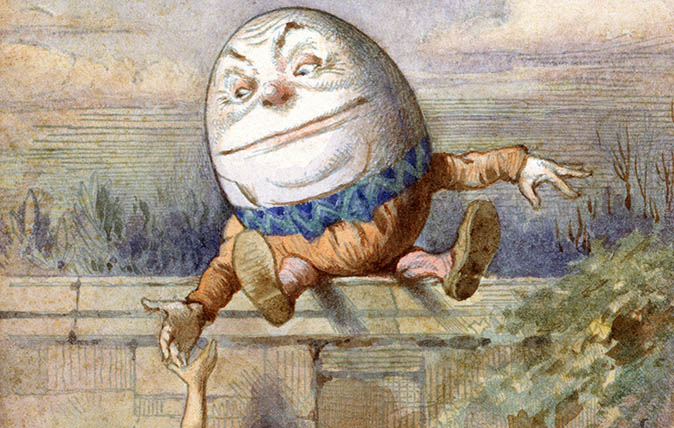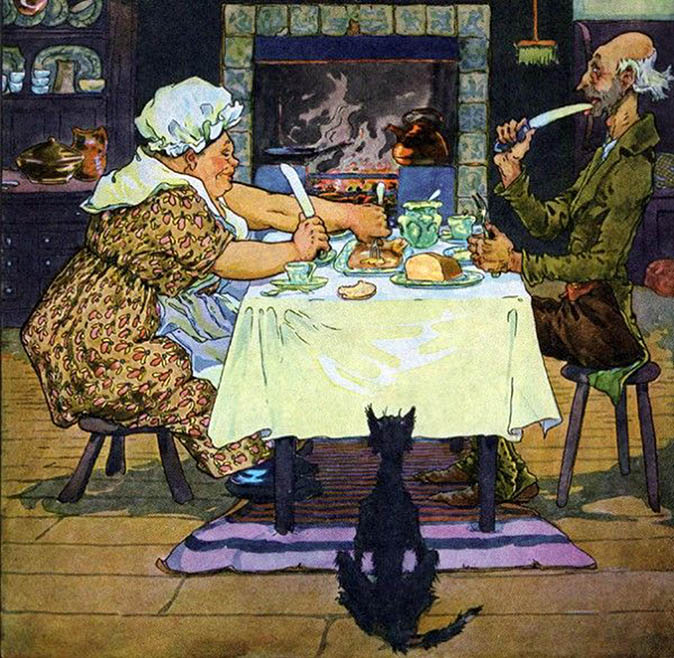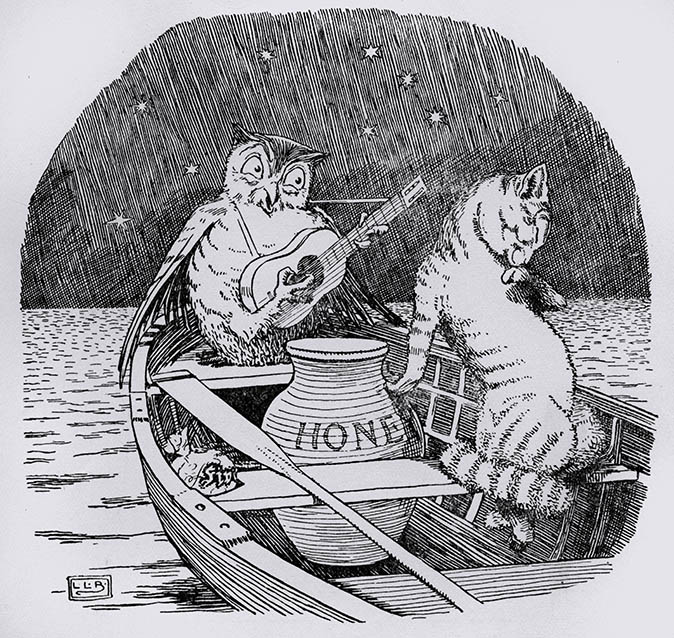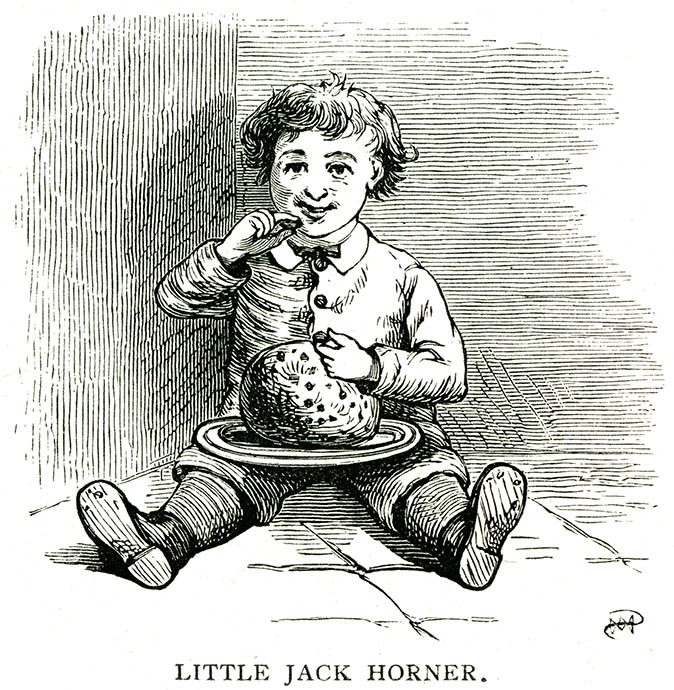Nursery rhymes: How murder, theft and fake news found their way into the tales we tell our children
Murder, animal cruelty and dishonesty aren’t generally considered child-friendly topics, yet they’re the basis of many much-loved nursery rhymes. Flora Watkins explains.


‘Why, sometimes I’ve believed as many as six impossible things before breakfast,’ declares the Red Queen in Alice in Wonderland. However, compared with the average infant, this is positively conservative.
By the time a child reaches its first birthday, it will have encountered cows clearing the moon with a single leap, crockery and cutlery eloping together and elderly women getting up to all manner of extraordinary things: living in shoes, being tossed up in baskets and sweeping cobwebs from the sky. When they grow up and have a baby of their own in the nursery, they too will sing them the traditional songs.
"The deeper one delves into the history of a rhyme, ‘the farther one finds oneself being led from the cot-side"
They might not ever ponder the provenance or meaning, however, or how the jaunty tunes of such staples as Three Blind Mice, Oranges and Lemons and Ding Dong Bell are at odds with the often cruel and gory subject matter.
Indeed, after analysing nursery rhymes in the late 1940s, the writer Geoffrey Handley-Taylor pronounced that about half had ‘unsavoury elements’, including murder, cruelty to animals, decapitation, physical violence and ‘stealing and general dishonesty’.
In fact, in the definitive work on the subject, The Oxford Dictionary of Nursery Rhymes (1951), authors Iona and Peter Opie conclude that – with the exception of lullabies and counting songs – the deeper one delves into the history of a rhyme, ‘the farther one finds oneself being led from the cot-side’.
Many are remnants of ballads and folk songs, riddles (Humpty Dumpty), proverbs (Jack Sprat), the historical (Baa Baa Black Sheep, about the medieval export tax on wool) and political jibes (Who Killed Cock Robin is thought to be about the downfall of Robert Walpole’s government in 1742).
Others have historical links. It is thought that the Grand Old Duke of York was Frederick, George III’s son, that Elsie Marley was the lively wife of the innkeeper at The Swan in Picktree, Co Durham, and that Jack Sprat (a 17th-century term for a dwarf) probably referred to a 16th century Archdeacon Pratt.
Exquisite houses, the beauty of Nature, and how to get the most from your life, straight to your inbox.

Many other explanations, however, enter the realm of the Red Queen – as you’ll see below, many of the best-known explanations of rhymes are pure conjecture. ‘Much ingenuity’ has been exercised to imbue certain nursery rhymes with greater significance, but ‘the bulk of these speculations’, according to the Opies, ‘is worthless’.
Not that it matters. In a pamphlet of 1927, Robert Graves wrote that children don’t ask of their poems that they make sense or ‘correspond with the reality of the schoolroom world’. Moreover, he added, some of the older nursery rhymes ‘are nearer to poetry than the greater part of the Oxford Book of English Verse’.
Vita Sackville-West, who penned her thoughts on the subject in 1947, thought they were ‘tiny, unconscious works of art’ and G. K. Chesterton thought the line ‘Over the hills and far away’ was one of the most beautiful in all English poetry.
Add in some good, jolly tunes and you're half-way therer. ‘Lavender’s Blue is a dance tune, a galliard from the Elizabethan period,’ explains music historian Jeremy Barlow, an expert in early-English popular music. Then throw in the sound, rhythm and repetition of lines such as ‘Hickory dickory dock’, and you have an immediate and compelling attraction for young children that has endured through the ages.
So let us, then, be like the child, put the reference book to one side and open Mother Goose – although, of course, there’s no need to look at the words. Let’s enter a world of talking sheep and leaping cows, where the trees bear silver nutmegs and golden pears and blackbirds sing in pies, for, as Sackville-West observed: ‘It puts to shame the real world.’ Can we get there by candlelight? Yes, and back again.
Lavender’s Blue: A tale of seduction
Many nursery rhymes ‘weren’t originally for children,’ explains Jeremy Barlow. Lavender’s Blue, for example, which dates from about 1680, was originally ‘a broadside ballad – these were poems with many verses, like Greensleeves, printed on a single flimsy sheet and sold on the street for a ha’penny’.
Although there are some innocent verses to Lavender’s Blue, ‘the whole thing is a tale of seduction,’ he continues, citing the line ‘Whilst you and I, diddle diddle/Keep the bed warm’.
Ring a Ring o’ Roses: Forget the plague
It’s commonly ‘known’ that Ring a Ring o’ Roses is about the Plague – the only problem with that knowledge is that it’s almost certainly not true. The earliest known appearance of the words to Ring o’ Roses dates from 1881; it’s probably just a simple nursery game.
Hey Diddle Diddle: Religion, astronomy… or just pure nonsense?
Perhaps all one can say with certainty is that the sources and inspiration for nursery rhymes are myriad. So much so that Hey Diddle Diddle has been connected, variously, with Hathor worship, the flight from Egypt and constellations of stars and ‘the cat and the fiddle’ has been taken to refer to Catherine la Fidèle (Catherine of Aragon).
Yet most scholars accept it is simply a nonsense poem, in the tradition upheld by Lewis Carroll and Edward Lear.

Humpty Dumpty: A riddle that’s known throughout Europe
Lots of people will tell you knowingly that Humpty Dumpty was a weapon in the English Civil War. They’re wrong. Humpty Dumpty is actually a riddle – the answer being an egg – and it’s known throughout Europe. In France, he is Boule, Boule, in Norway and Sweden Lille-Trille and in Germany variously Trille Trölle and Hümpelken-Pümpelken.
Mary, Mary Quite Contrary: Torture song or innocent entertainment?
Isn’t Mary, Mary Quite Contrary about Mary I’s penchant for torturing Protestants? We can say nothing more than maybe. It is possible that Mary, Mary has a religious background, but, again, this is guesswork and it’s perhaps no more than a charming rhyme with an element of the fantastical.
‘Certainly, with any nursery rhyme with a name of a monarch – George, Mary – people have tried to fasten some political meaning to it,’ says Mr Barlow, ‘and it possibly did go on. Of course, you did have to be careful how you expressed yourself during [the religious upheaval of] the 16th century.’
Lucy Locket and I had a little nut tree: The original ‘fake news’
The desire to imbue nursery rhymes with layer upon layer of meaning should be viewed, he counsels, within the ‘huge antiquarian movement of the 19th century that was interested in the oral literature of the peasants’. What the Brothers Grimm were doing for fairy tales in central Europe, scholars such as James Orchard Halliwell were doing for nursery rhymes in Britain.
Perhaps in an early forerunner of our era of ‘fake news’, Halliwell baldly stated Lucy Locket to be about two courtesans of the reign of Charles II and I Had a Little Nut Tree to refer to Juana of Castile, the mad ‘King of Spain’s daughter’ who visited the court of Henry VII in 1506.
Charming though these tales might be, they are ‘purely suppositional’, say the Opies.
Little Jack Horner: The ‘plum’ that was actually a Tudor manor
This isn’t to say that real people and actual events haven’t inspired certain rhymes. It’s quite possible the ‘plum’ that Little Jack Horner extracted from the pie was the deeds of the Manor of Mells, at the time of the Dissolution. It’s also likely to have something to do with the 16th-century culinary vogue for putting surprising things – four-and-twenty blackbirds, for example – into pies.

Mary Had a Little Lamb: An American import
One of the best-known rhymes in the English language, Mary Had a Little Lamb is in fact American. It was written by Mrs Sarah Hale in Boston in 1830. There have been several claimants to the original Mary.
Pussycat, Pussycat: The mystery royal cat who never was
The queen in Pussycat, Pussycat was probably Elizabeth I. In 1949, while visiting families on an RAF station, a boy asked The Queen: ‘Where’s the pussycat?’ Her Majesty apologised to him for not bringing it.
